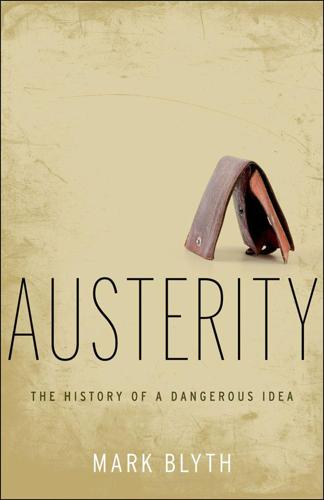
Austerity: The History of a Dangerous Idea
by
Mark Blyth
Published 24 Apr 2013
The tension between these two viewpoints—can’t live with it, can’t live without it—generates a concern with how states should fund themselves, and it is this concern that creates the conditions for the emergence of austerity as a distinct economic doctrine when states become large enough budgetary entities in their own right to warrant cutting: that is, by the 1920s. When that happens, austerity appears in its own right as a distinct economic doctrine. After briefly detailing some nineteenth- and early twentieth-century precursors, I examine the two key austerity doctrines formed in this period: “liquidationism”—sometimes called “the Banker’s doctrine” in the United States—and the “Treasury view” in the United Kingdom. These ideas were, I argue, the original neoliberal ideas in that they drew on the classical liberalism of Locke, Hume, and Smith, and applied themselves anew to the policy issues of the day. I then discuss the responses that these ideas engendered, the most relevant of which are John Maynard Keynes’s refutation of austerity policies and Joseph Schumpeter’s strange abrogation of them.11 By 1942, it seems that the die has been cast and austerity had been sent away to the retirement home for bad economic ideas.
…
O., 168 Sweden as a welfare state, 214 austerity in, 17, 178–180, 191–193, 204, 206 economic recovery in the 1930s in, 126 expansionary contraction in, 209–210, 211 fiscal adjustment in, 173 Swedish Social Democrats, (SAP), 191 thirty-year bond in, 210–211 systemic risk, 44 Tabellini, Guido “Positive Theory of Fiscal Deficits and Government Debt in a Democracy, A”, 167 tail risk, 44 See also systemic risk Takahashi, Korekiyo, 199 Taleb, Nassim Nicolas, 32, 33, 34 “Tales of Fiscal Adjustment” (Alesina and Ardanga), 171, 205, 208, 209 Target Two payments, 91 Taylor, Alan, 73 Tax Justice Network, 244 Thatcher, Margaret, 15 “there is no alternative”, 98, 171–173, 175, 231 ThyssenKrupp, 132 Tilford, Simon, 83 “too big to bail,” 49, 51–93, 74, 82 European banks as, 83, 90, 92 “too big to fail”, 6, 16, 45, 47–50, 82, 231 Tooze, Adam, 196 Trichet, Jean Claude, 60 as president of the ECB, 176 on Greece and Ireland, 235 See also European Central Bank United Kingdom, 1 and the gold standard, 185, 189–191 asset footprint of top banks, 83 austerity in, 17, 122–125, 126, 178–180 and the global economy in the 1920s and 1930s, 184–189, 189–121 banking crisis in, 52 cost of, 45 depression in, 204 Eurozone Ten-Year Government Bond Yields, 80 fig. 3.2 Gordon Brown economics policy, 5, 59 housing bubble, 66–67 Lawson boom, 208 “Memoranda on Certain Proposals Relating to Unemployment” (UK White Paper), 122, 124 New Liberalism, 117–119 “Treasury view”, 101, 163–165 war debts to the United States, 185 United States, 2 AAA credit rating, 1, 2–3 Agricultural Adjustment Act, 188 and current economic conditions, 213 and printing its own money, 11 and recycling foreign savings, 11–12 and the Austrian School of economics, 121, 143–145, 148–152 and the gold standard, 188 assets of large banks in, 6 austerity in, 17, 119–122, 178–180, 187–189 “Banker’s doctrine”, 101 banking system of, 6 cost of crisis, 45, 52 Bush administration economics policy, 5, 58–59 capital-flow cycle in, 11 Congressional Research Service (CRS), 213 debt-ceiling agreement, 3 depression in, 188 Federal Reserve, 6, 157 federal taxes, 242–243 liberalism in, 119–122 liquidationism in, 119–122, 204 National Industrial Recovery Act, 188 repo market, 15–16, 24–25 rise in real estate prices in, 27 Securities and Exchange Commission, 49 Simson-Bowles Commission, 122, 122–125 Social Security Act, 188 stimulus in, 55 stop in capital flow in 1929, 190 Treasury bills, 25 Troubled Asset Relief Program, 58–59, 230 and American politics involvement, 59 Wagner’s Act, 188 Wall Street Crash of 1929, 204, 238 Washington Consensus, 142, 161–162, 165 Value at Risk (VaR) analysis, 34–38 Vienna agreement, 221 Viniar, David, 32 Wade, Robert, 13 Wagner, Richard, 156 Wartin, Christian, 137 Watson Institute for International Studies, ix “We Can Conquer Unemployment” (Lloyd George), 123, 24 “Wealth of Nations, The”, 109, 112 welfare, xi, 58 welfare state foundation for, 117 Wells Fargo, 48 Whyte, Philip, 83 Williamson, John, 161, 162 World Bank, 163, 210, 211 World Economic Outlook, 212
…
Joan Robinson, “The Second Crisis of Economic Theory,” American Economic Review 62, 1/2 (March 1972): 2. 85. Stanley Baldwin, quoted in Keith Middlemas and John Barnes, Baldwin: A Biography (Oxford: Oxford University Press, 1972) quoted in George C. Peden “The ‘Treasury View’ on Public Works and Employment in the Interwar Period,” The Economic History Review 37, 2 (May 1984): 169. 86. John Maynard Keynes, The Collected Writings of John Maynard Keynes: Volume VIII (Cambridge: Cambridge University Press), 19–23, quoted in Peden, “The ‘Treasury View,’” 170. 87. John Quiggin, Zombie Economics (Princeton, NJ: Princeton University Press, 2012). 88. Robinson, “Second Crisis,” 1. 89. Ibid., 4.
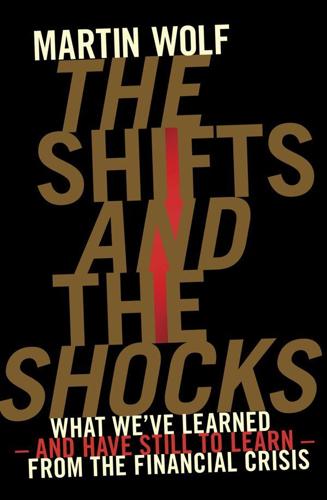
The Shifts and the Shocks: What We've Learned--And Have Still to Learn--From the Financial Crisis
by
Martin Wolf
Published 24 Nov 2015
The standard tools of liquidationism – depressions, mass bankruptcy and mass unemployment – are needed to deliver this outcome. The Eurozone might even be described as structurally liquidationist. It is easy to understand why people argue that one should let the medicine work, unchecked, however bad the side effects. It is, like chemotherapy, a cure that comes close to killing the patient. But this liquidationism is also tempered, in practice, making its results slower and the treatment not quite as brutal as it would otherwise be. Yet did member countries really bargain for such a ‘liquidationism light’? Might it then be possible to temper the liquidationism, while also avoiding the onerous limits on sovereign discretion of the Eurozone’s new orthodoxy?
…
The UK’s austerity programme, launched in 2010, removed fiscal support for recovery and, together with the falling output of North Sea oil, adverse shifts in the terms of trade and rising domestic prices of imports, resulted in economic stagnation for a further three years. The outcome was far worse in crisis-hit parts of the Eurozone, where the approach taken was close to liquidationism (on which see further below). In brief, the short-term record of the new orthodoxy was far from a catastrophe. But it could have done far better. In particular, it failed to provide adequate support for demand, partly because of premature fiscal tightening. A widely promoted alternative to the new orthodoxy has been ‘liquidationism’ – reliance on the free market, without fiscal or monetary policy support. This approach has limited support among academic economists, but substantial support among active participants in financial markets, including some successful speculators.
…
Moreover, rescue facilities, particularly if limited in scope, should not encourage excessive financial imprudence, because those who make bad decisions still suffer harsh penalties to their finances, their reputations, or, more often, both. Yet liquidationism is still quite correct on one thing: shareholders should never be rescued. There should also be a clear order of conversion of debt into equity in a well-defined resolution regime that allows financial institutions to continue to function. Only in extreme circumstances should a government rescue be contemplated. But, in democracies, governments will always respond to the public’s desire for basic security. Outright collapse of the core financial system cannot be permitted. If pure liquidationism is unnecessary, unworkable and unbearable, the new orthodoxy is also insufficient.

End This Depression Now!
by
Paul Krugman
Published 30 Apr 2012
When I studied economics, claims like Schumpeter’s were described as characteristic of the “liquidationist” school, which basically asserted that the suffering that takes place in a depression is good and natural, and that nothing should be done to alleviate it. And liquidationism, we were taught, had been decisively refuted by events. Never mind Keynes; Milton Friedman had crusaded against this kind of thinking. Yet in 2010 liquidationist arguments no different from those of Schumpeter (or Hayek) suddenly regained prominence. Rajan’s writings provide the most explicit statement of the new liquidationism, but I have heard similar arguments from many financial officials. No new evidence or careful reasoning was presented to explain why this doctrine should rise from the dead.
…
There are players on the political landscape—important players, with real influence—who don’t believe that it’s possible for the economy as a whole to suffer from inadequate demand. There can be lack of demand for some goods, they say, but there can’t be too little demand across the board. Why? Because, they claim, people have to spend their income on something. This is the fallacy Keynes called “Say’s Law”; it’s also sometimes called the “Treasury view,” a reference not to our Treasury but to His Majesty’s Treasury in the 1930s, an institution that insisted that any government spending would always displace an equal amount of private spending. Just so you know that I’m not describing a straw man, here’s Brian Riedl of the Heritage Foundation (a right-wing think tank) in an early-2009 interview with National Review: The grand Keynesian myth is that you can spend money and thereby increase demand.

Does Capitalism Have a Future?
by
Immanuel Wallerstein
,
Randall Collins
,
Michael Mann
,
Georgi Derluguian
,
Craig Calhoun
,
Stephen Hoye
and
Audible Studios
Published 15 Nov 2013
There was ideological attachment by old regimes to laissez-faire economics, a stock market bubble, and an uncompleted transition from old to new forms of manufacturing, all of which lowered the employment potential of the economy. In America, the eye of the storm, grave policy mistakes were also made by Congress and by the Federal Reserve Board rooted in the market fundamentalism of this period which reached its ghastly climax in what was called “liquidationism”–the pursuit of austerity measures in order to destroy inefficient firms, industries, investors, and workers. Absent any two or three of these varied causes cascading on top of each other and we would have been labeling this a cyclical recession. But the cascade was by no means inevitable. The Depression is often treated as being global but it struck unevenly.
…
There do seem to be economic lessons to draw from these crises which in theory might reduce the likelihood of future crises. But it is far from clear that powerful elites have drawn the appropriate lessons. Neoliberal austerity programs inflicted on economies in recession unfortunately recall the unhelpful role of liquidationism at the beginning of the 1930s. Note also that in the 20th century the two terrible wars had absolutely contrary effects, further worsening the problem of prediction. The first war helped intensify a recession into the Great Depression, the second substantially contributed to the biggest boom of all—and to American hegemony.

No Such Thing as a Free Gift: The Gates Foundation and the Price of Philanthropy
by
Linsey McGoey
Published 14 Apr 2015
Government aid, he argued, must be extended ‘not as a matter of charity but as a matter of social duty’.38 The policies of the Hoover-Mellon alliance have been much commented in recent years, as both Democrats and Republicans advance fiscal policies reminiscent of Mellon’s time in the US treasury. The economist Paul Krugman puts it bluntly: ‘Mellon-style liquidationism is now the official doctrine of the G.O.P’.39 But the recent focus on economic similarities has overshadowed attention to something less perceptible: shared ideological commitment. Like Carnegie before him and Fries today, Mellon was a firm believer in the credo that wealth concentration will inevitably foster collective benefits.
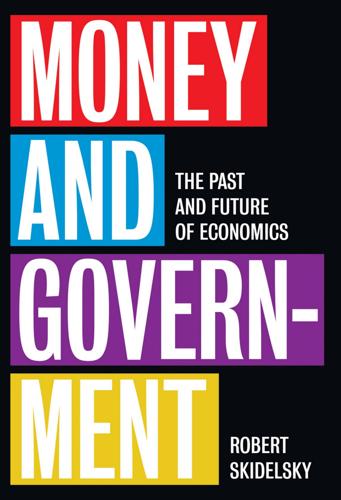
Money and Government: The Past and Future of Economics
by
Robert Skidelsky
Published 13 Nov 2018
In a deep slump it was no longer enough to manage expectations about the future of the price level; the expectations which needed managing were about the future of output and employment. This required fiscal policy. But fiscal policy to fight the slump offered its own obstacle in the form of the Treasury View, presented at the Macmillan Committee by the formidable Sir Richard Hopkins. Keynes thought he knew what the Treasury View was, and that he was in a position to refute it. The Treasury had claimed that loan-financed public spending could not add to investment and employment, only divert them from existing uses. This was true, Keynes was prepared to say, only on the assumption of full employment.
…
Peden, G. C. (1983), Sir Richard Hopkins and the ‘Keynesian Revolution’ in employment policy, 1929–1945. Economic History Review, 36 (2), pp. 281–96. Peden, G. C. (1984), The ‘Treasury View’ on public works and employment in the interwar period. Economic History Review, 37 (2), pp. 167–81. 450 Bi bl io g r a p h y Peden, G. C. (1993), The road to and from Gairloch: Lloyd George, unemployment, inflation, and the ‘Treasury View’ in 1921. Twentieth Century British History, 4 (3), pp. 224–49. Peden, G. C. (2000), The Treasury and British Public Policy, 1906–1959. Oxford: Oxford University Press. Peden, G.
…
Particularly striking was one in December 1921 by Sir Edwin Montagu, Secretary of State for India, that the government should deliberately budget for a deficit by reducing income tax, with the expectation that the borrowing requirement would decline as the tax cuts revived the economy, and therefore the government’s revenue.22 Lloyd George’s own preference was to invest in large public works programmes; these counted as capital expenditure and so would not affect the Chancellor’s budget for current spending. It was against these supposedly 107 T h e R i s e , T r i u m p h a n d Fa l l of K e y n e s improvident plans that the ‘Treasury View’ defined itself. In a note to Lloyd George’s Committee, Sir Otto Niemeyer, Controller of Finance at the Treasury, explained that unemployment was not due to insufficient demand, but excessive wage costs. ‘The earnings of British industry are not sufficient to pay the present scale of wages all round.
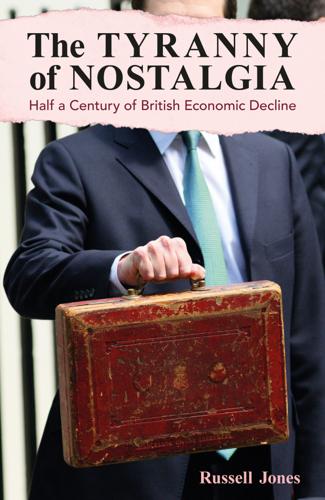
The Tyranny of Nostalgia: Half a Century of British Economic Decline
by
Russell Jones
Published 15 Jan 2023
Perhaps, then, to reduce uncertainty to at least a sense of risk, we invent fetishes – dogmas – that focus our attention on one particular set of variables as the light under the proverbial drunk’s lamppost just as the prior lamppost fails. Heath was the last devotee of the Phillips curve. Callaghan of incomes policies. For Thatcher it was the quantity theory plus tax cuts wedded to a Ricardian conception of society. Major sought refuge in offshore anchors; Brown in rules that he got to write. Osborne found guidance in the ‘Treasury view’ redux. Cameron gave everyone else Brexit. To her credit, Truss at least knew that growth and productivity were what really mattered. Unfortunately, the only map that Truss and Kwarteng could find to get there seems to have come from a comedy version of Thatcherism – on steroids. So where does that leave us?
…
The situation was further complicated by the fact that if Scotland left the UK, it would also have to leave the EU, and it was unclear how easy it would prove to rejoin. Doing so would require unanimous agreement among member states, and Spain was likely to prove a particular stumbling block given its own issues with Catalonian and Basque self-determination. Where financial services were concerned, the Treasury view was similarly disobliging. The Scottish financial sector was important, accounting for some 7% of Scottish GDP and 8% of Scottish employment. However, the majority of the customers of its banks, insurance companies and asset managers were dispersed around the rest of the UK and beyond, and they had long been regulated by the Bank of England and by other bodies based in London.
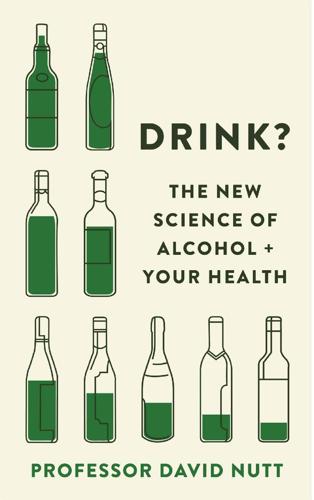
Drink?: The New Science of Alcohol and Your Health
by
David Nutt
Published 9 Jan 2020
Taxation of alcohol raises about £20 billion a year. That leaves a net deficit of up to £30 billion. But the government are terrified of making any change to alcohol’s status because its income from taxation is immediate. The industry pays its tax quarterly and duty is coming in constantly. The Treasury view is that if things changed, the tax income would reduce but the health benefits wouldn’t happen for 10 to 20 years. The truth is, some of the health costs are immediate. Think about an A&E department on a Friday night: if it was only half full, you wouldn’t need so many nurses and doctors. And if you can reduce someone’s consumption of cheap cider from, say, two litres a day down to one, they can then be treated more cheaply in a normal ward and not in intensive care, as they won’t be dying.

After the New Economy: The Binge . . . And the Hangover That Won't Go Away
by
Doug Henwood
Published 9 May 2005
Many countries protected their industries and regulated finance and other sectors, cross-border capital flows were often restricted, and currencies weren't always easily convertible into other currencies.^ The nineteenth-century economics of Hght regulation, tight budgets free prices, and self-equilibrating markets—^what Keynes derided during the Depression as "the Treasury view"—seemed deeply buried. You needn't take the word of a long-dead Marxist Hke Kalecki for it, though; there's supporting testimony from Alan Greenspan. Several times Finance 207 during the late 1990s, Greenspan worried publicly that, as unemployment drifted steadily lower the "pool of available workers" was running dry.''

When the Money Runs Out: The End of Western Affluence
by
Stephen D. King
Published 17 Jun 2013
With draconian severity, he has set himself to balance the Budget … This is certainly an heroic achievement which should leave no doubt in the minds of our foreign creditors that at any rate we are thoroughly prepared to pay our way by living within our means … there need no longer be any fear that the pound sterling will be overwhelmed by budgetary instability.2 This extraordinary enthusiasm stood in marked contrast to the attitude towards Snowden's effort in April of that year, which the Times caustically labelled ‘A Makeshift Budget’: The taxpayer is at best in the position of the patient who has escaped for the moment the more painful attentions of the dentist, only to leave the real business of the operation until the next visit … The outstanding features of Mr Snowden's Budget … are a quite unwarranted optimism and a misplaced fertility of makeshift expedients … His deficit is due in the main to an increase in current expenditure which shows no signs of abating: nor is there any solid reason whatever for supposing that any such marked recovery as he anticipates is likely to take place during the next twelve months. However deplorable any increase in taxation may be, there is at least one thing more deplorable still, and that is increased expenditure uncovered by current revenue. Today, Snowden's Budget and the ‘Treasury View’ that underpinned it are roundly condemned. As Ed Balls, the Shadow Chancellor of the Exchequer, argued in 2010: ‘And the result [of Snowden's Budget]? The promised private sector recovery failed to materialise as companies themselves sought to retrench. Unemployment soared. The Great Depression soured world politics and divided societies.‘3 This is, if you like, the new conventional wisdom.
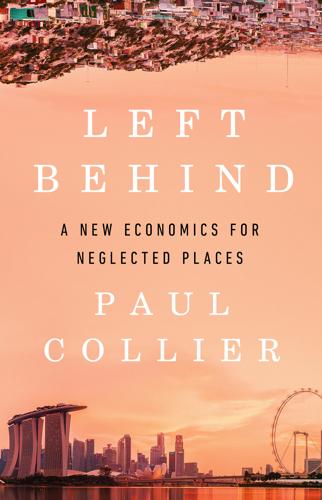
Left Behind
by
Paul Collier
Published 6 Aug 2024
The department had its own Cabinet Minister, who announced a detailed three-year programme in which he would coordinate new regional spending by other ministries. The minister was clever and capable, and his programme was impressive. Through his media appearances he succeeded in raising national awareness of the brutal consequences of past Treasury policies. But as a strategy for achieving change in Whitehall, the new initiative failed. The Treasury viewed the new department as another instance of local and regional interference. The Treasury’s ultimate trump card was that it controlled the budget for the new department. Despite being announced to the nation as the government’s flagship programme, the budget awarded to it by the Treasury was, astonishingly, zero.

Keeping at It: The Quest for Sound Money and Good Government
by
Paul Volcker
and
Christine Harper
Published 30 Oct 2018
But I did play a bit part. One of my responsibilities was economic forecasting, which I had done at the New York Fed. Looking ahead with the help of longtime civil servant and practical economist Herman Liebling, I concluded we would narrowly avoid recession in 1962, contrary to the CEA’s concerns. That supported the Treasury view: don’t rush the tax bill; do it right. Slow and careful won the day. Happily for the country (and for me), we did avoid recession. The tax program the president outlined in a mid-1962 press conference, days after the worst stock market dive since 1929, looked toward extensive reform. I recall producing a lengthy analysis of the economic impact of the proposed tax program for Under Secretary Henry “Joe” Fowler.
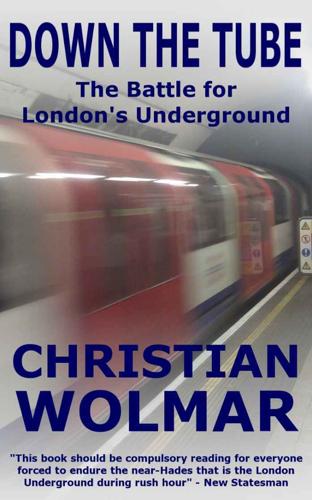
Down the Tube: The Battle for London's Underground
by
Christian Wolmar
Published 1 Jan 2002
In giving evidence to the transport select committee in April of that year, Denis Tunnicliffe and his fellow London Underground executives were unable to provide much detail of the contracts. Indeed, Tunnicliffe suggested that the length would probably be between fifteen and twenty-five years,* rather than the eventual thirty, and there was still uncertainty over whether there would be one, two or three infrastructure companies. That decision was not made until July when the Treasury view, which was always that there must be competition and preferably that there should be three players,* prevailed over the preference of John Prescott and London Transport for a single infrastructure company. At the time, the deadline for the contracts to be signed was envisaged to be April 2000, in time for the creation of the Greater London Authority and the mayor.
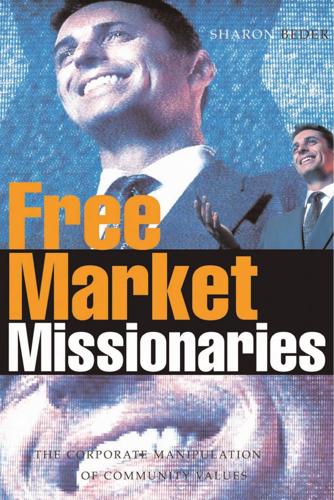
Free Market Missionaries: The Corporate Manipulation of Community Values
by
Sharon Beder
Published 30 Sep 2006
By the 1990s it had been reformulated as: how can governments create competitive market situations to ensure world-best practice is pursued and international standards are achieved? 66 The shift in the ALP government approach was such that, although elected in 1983 on promises of an expanded budget ‘to increase demand and commence the arduous task of sustained economic recovery’, the Treasury view prevailed and by 1984 the prime minister was promising not to raise taxes nor increase the deficit as a proportion of GDP. In fact, over the following seven years, the deficit fell from 28.9 per cent to 23.7 per cent of GDP. Similarly, prior to the election, Labor had been critical of a proposal for deregulation of the financial sector.

The Panama Papers: Breaking the Story of How the Rich and Powerful Hide Their Money
by
Frederik Obermaier
Published 17 Jun 2016
We draw up lists and compare the details in our files with information from the EU, the UN and the USA. Below is a selection. Bredenkamp, John Arnold This South African-born arms dealer was subject to EU sanctions from 2009 to 2012 due to his ‘close links to the Zimbabwean government’. The US Department of the Treasury views him as an associate of Mugabe’s regime and imposed sanctions on Bredenkamp and twenty of his firms in 2008.5 Makhlouf, Ihab Syrian president Bashar al-Assad’s cousin was sanctioned by the EU in May 2011 because he ‘funds the regime and helps to suppress demonstrations’. Makhlouf, Iyab Bashar al-Assad’s cousin and a Syrian intelligence officer was put on the EU sanctions list because he was allegedly involved in putting down protests.
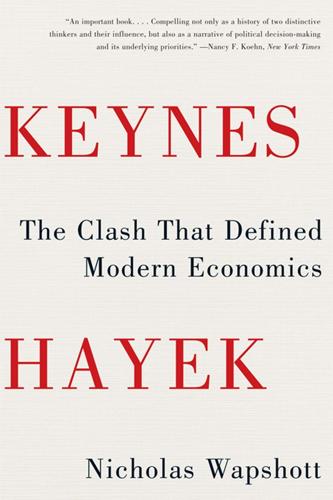
Keynes Hayek: The Clash That Defined Modern Economics
by
Nicholas Wapshott
Published 10 Oct 2011
Keynes and Reginald McKenna, the former wartime Liberal chancellor, argued that reducing wages by 10 percent would have to be imposed on the coal miners and that prolonged strikes and a contraction (slowing down of activity) in key industries would follow. Three days later, after persistent pressure from his more orthodox colleagues, Churchill abandoned his instinctive opposition to the Treasury view and agreed to restore fixing the pound sterling to the price of gold—“the gold standard”—at its prewar parity. Churchill’s decision led Keynes to write a series of articles for The Nation that were collected in a best-selling book, The Economic Consequences of Mr. Churchill, whose title echoed his Economic Consequences of the Peace.
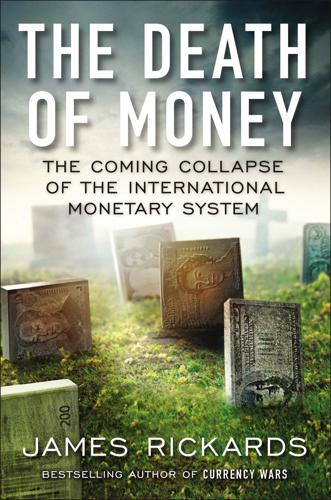
The Death of Money: The Coming Collapse of the International Monetary System
by
James Rickards
Published 7 Apr 2014
Treasury and Federal Reserve routinely pour cold water on the threat analysis. Their rejoinder begins with estimates of the market impact of financial war, then concludes that the Chinese or other major powers would never engage in it because it would produce massive losses on their own portfolios. This view reflects a dangerous official naïveté. The Treasury view supposes that the purpose of financial war is financial gain. It is not. The purpose of financial war is to degrade an enemy’s capabilities and subdue the enemy while seeking geopolitical advantage in targeted areas. Making a portfolio profit has nothing to do with a financial attack. If the attacker can bring an opponent to a state of near collapse and paralysis through a financial catastrophe while advancing on other fronts, then the financial war will be judged a success, even if the attacker incurs large costs.
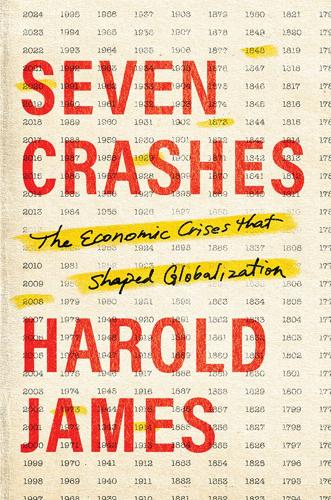
Seven Crashes: The Economic Crises That Shaped Globalization
by
Harold James
Published 15 Jan 2023
He concluded that “[t]he r < g opportunity is like the classic strategy of writing put options, which fails in the most painful state of the world.”116 The obvious answer in the Keynesian tradition to the post-2008 predicament was then to push government expenditure on infrastructure, as a way of adding to demand and also raising the longer-term potential growth path. In an article cowritten with Jason Furman, Summers set out the view that the old balanced-budget approach of “deficit fundamentalists,” the “Treasury View” of interwar Britain or the Clinton approach to fiscal stability, was outdated. Disasters such as the Eurozone debt crisis were the result not so much of deficits but of inadequate growth. “Longterm structural declines in interest rates mean that policymakers should reconsider the traditional fiscal approach that has often wrong-headedly limited worthwhile investments in such areas as education, health care, and infrastructure.
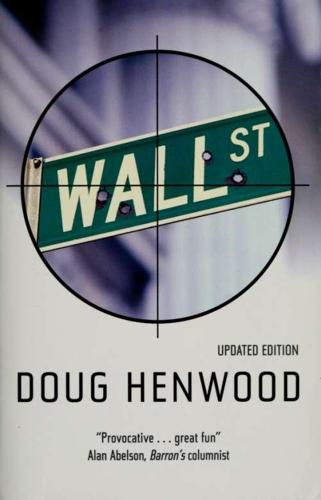
Wall Street: How It Works And for Whom
by
Doug Henwood
Published 30 Aug 1998
As the collapse unfolded, Hilferding again advocated austerity — budget cuts and tax increases, while resisting ail "inflationary" schemes (Darity and Horn 1985). While Hilferding obviously can't be blamed for the collapse, his loyalty to capitalist financial orthodoxy — what Keynes derided in Britain as "the Treasury view" — is inexcusable in a socialist, and further proof that in practical matters, Marxians can be as blinkered as the most austere Chicagoan. money and power Several aspects of Marx's theorizing on money and credit are worth savoring: the inseparability of money and commerce, the political nature of money (and the inseparability of market and state), and the role of credit in breaking capital's own barriers to accumulation.

Not Working: Where Have All the Good Jobs Gone?
by
David G. Blanchflower
Published 12 Apr 2021
Figure 11.4. “The feller ought to be ashamed! Encouraging rain!” This is a famous cartoon by David Low printed in the UK Evening Standard on January 5, 1938, depicting the residences of the UK prime minister at #10 Downing Street and of the Chancellor of the Exchequer at #11. As background, the Treasury view was that fiscal policy had no effect on the total amount of economic activity and unemployment, even during times of economic recession. This view was most famously advanced in the 1930s by the staff of the British Chancellor of the Exchequer. In 2010 the UK Chancellor George Osborne implemented huge public spending cuts that he argued would result in an expansionary fiscal contraction but resulted in the slowest peacetime recovery in three hundred years since the South Sea Bubble.
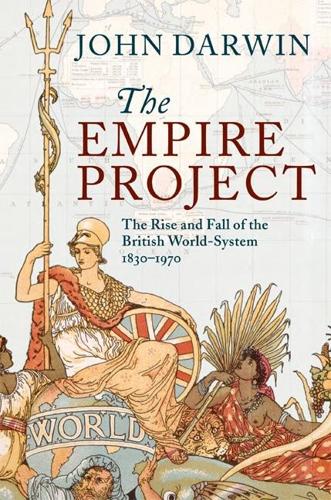
The Empire Project: The Rise and Fall of the British World-System, 1830–1970
by
John Darwin
Published 23 Sep 2009
Pretoria caved in and agreed to the exchange of its gold for sterling.75 In the colonial economies, London could set the price that was paid for their commodity exports, and restrict the manufactures they were sent in return. This was a way of exporting Britain's austerity, and reducing colonial consumption to hoard ‘British’ dollars. In the Treasury's view, selling on colonial produce was a far more promising way of increasing London's dollar income than closer relations with the Western European countries.76 Meanwhile, in a world starved of industrial goods, and with most of their pre-war competitors in disarray, the British could sell abroad all they could make.

The Defence of the Realm
by
Christopher Andrew
Published 2 Aug 2010
This transposing of the sexes, and the use of other homosexual slang, at times made for difficulties of interpretation.’113 The Security Service, however, saw no reason to follow the Canadian example: ‘It was concluded that the present criterion was right, i.e. that homosexuality raises a presumption of unfitness to hold a P.V. post but the presumption can be disregarded by the Head of the Department if he is satisfied in all the circumstances that this can be done without prejudice to national security.’ In 1965 the Security Service successfully resisted the Treasury view that it might be necessary to treat homosexuality as an absolute bar against holding any post which required positive vetting.114 Though its criteria were never fully spelt out, the Service seems to have been relatively unconcerned during positive vetting by the presence of gays in the government service, provided that they did not actually identify themselves as homosexual and remained discreet about their sexual liaisons (which, until 1967, remained illegal).